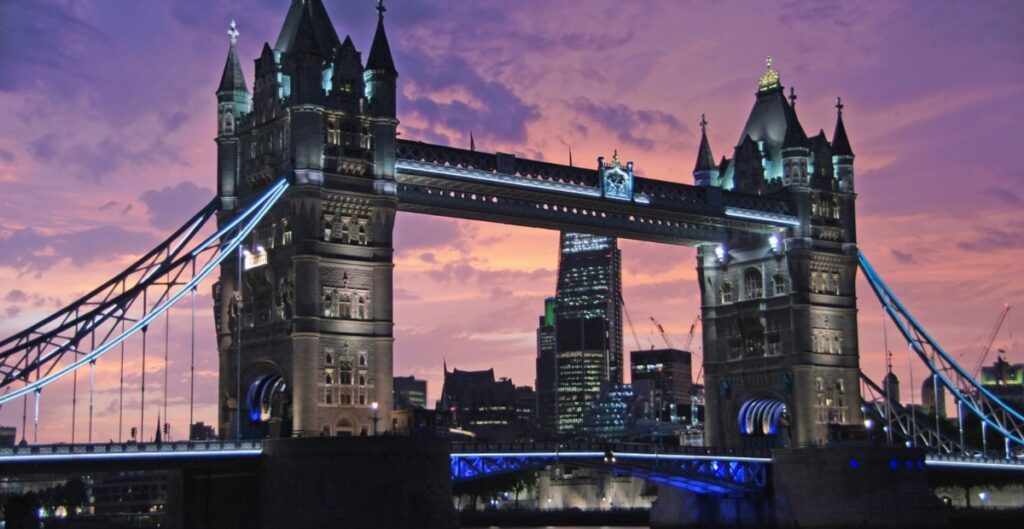In 2019, the UK announced a plan to end its contribution to global warming by 2050. To achieve this goal, it needs to reduce all greenhouse gas emissions to net zero. This represented an ambitious step from the previous goal of achieving 80% reduction from 1990 levels.
While all of the UK is committed to this plan, Scotland aims to do even more and has its own target to achieve net zero five years sooner, by 2045.
Some companies, concerned about climate change and motivated to reduce their impact on the environment, set even more ambitious environmental goals for themselves. Here we discuss the general goals the UK has and look at case studies of some UK organisations which, as reported by EMA (Energy Managers Association), have been performing incredibly well on this front.
UK net zero plan explained
The UK’s net zero strategy is a government plan to reduce harmful emissions and decarbonise all sectors of the UK economy by 2050. This covers areas such as transport and agriculture, amongst others. While achieving net zero by 2050 is the main goal, there are also numerous shorter-term targets that the UK aims to achieve before that.
Some measures that fall under the strategy are:
- Ending the sale of new petrol and diesel cars by 2030
- Offering grants to household to facilitate them switching from gas boilers to heat pumps and other low-carbon heating systems
- Encouraging farmers to use low-carbon farming methods.
If the UK’s net zero plan is successful, it will have numerous benefits for everyone in the country as it will enable the creation of a climate-friendly economy. The environment will be cleaner, and there will be better public and active transport (this includes more buses and cycle lanes). And, there will be more energy security which, as the current energy crisis shows, is very important. That can be achieved by the UK focusing more on renewables and generating more of its own energy, which means it will not be affected by what is happening on global energy markets.
JTI UK case study
EMA explains that JTI UK is a tobacco company that puts sustainability at the centre of its activities. They operate in more than 70 countries and are committed to understanding and improving their environmental impacts. They do that through a Sustainability Strategy, which not only focuses on the environment but also on human rights and better governance.
In the UK, JTI UK launched the Environmental Plan 2020 which aims to achieve the following:
| Field | Objective | Targets |
| Emissions | Reduce the contribution to climate change | Achieve net zero by 2030 Define a target for distribution and travel emissions Reduce emissions from operations by 80% by 2030 Complete fleet transition to electric vehicles by 2030 |
| Energy | Reduce energy consumption and decarbonise it | Use 100% renewable electricity starting in 2020 Source 100% energy by 2025 Reduce energy consumption by 20% by 2030 Introduce more renewable energy projects |
| Waste | Play a role in the transition to a more circular economy | Divert 100% of on-site waste from landfill by 2023 Make sure suppliers send zero waste to landfill by 2025 Reduce waste by 20% by 2030 Do more recycling Source more sustainable, recyclable materials |
| Water | Reduce water usage | Improve water efficiency Reduce water waste |
| Engagement | Promote responsible behaviour | Encourage consumers to act in a responsible manner Raise awareness about managing waste and the right way to dispose of products Introduce volunteering and reward programmes |
JTI UK introduced this plan in 2020 and has since then been working on implementing various aspects of it.
‘Our approach is to have clear priorities and to focus on those areas of the business which have a significant impact, like procurement or office operations, for example. We get involved with them on a more one-to-one basis, with regular meetings, running inductions and workshops, tailoring and developing actions lists, for instance. We are also happy to work with those teams who are actively engaged but may have a smaller impact – we can play a more advisory role with them. Understanding who and where we need to support helps us work with different directorates and functions, bringing them along on the journey,’ the company explains.
Aberdeen University case study
Another case study that EMA thought was worth having a look at is the University of Aberdeen, which is Scotland’s third oldest university. The institution committed to reaching Net Zero Carbon before 2040.
The new Net Zero Carbon Strategy was announced as a replacement of the Carbon Management Plan which was first developed in 2009 and which was focusing mainly on energy emissions. The new plan covers more areas such as ‘renewable energy systems,
district heating networks, carbon accounting, building management systems, energy metering systems and awareness-raising in relation to energy and sustainability initiatives on campus,’ EMA writes.
The university started focusing more on sustainability as it recognised that addressing climate change is something of utmost importance to its students.
‘Achieving net zero will enhance our brand as an environmental champion institution and assist us in attracting the best staff and students to the University. We want to ensure that we adhere to the triple bottom line concept through running the campus and business in the most effective manner and minimising our environmental impact on the planet. To achieve our goal in the most efficient manner we have mapped out the process and required steps,’ representatives of Aberdeen University told EMA.
The University of Aberdeen is proud to be the first university in Scotland to declare commitment to a science based target that aligns with the requirements set out in the 2015 Paris Climate Agreement (to limit global warming well below 2 degrees Celsius).
The academic institution aims to do its part in tackling climate change ahead of the official 2050 target set by the UK government. While the university is on the right track to achieving this goal, still a lot of progress needs to be made. And, improving the university’s energy efficiency is not easy as the infrastructure on campus is ageing and implementing carbon reduction projects in historical buildings is very challenging.




